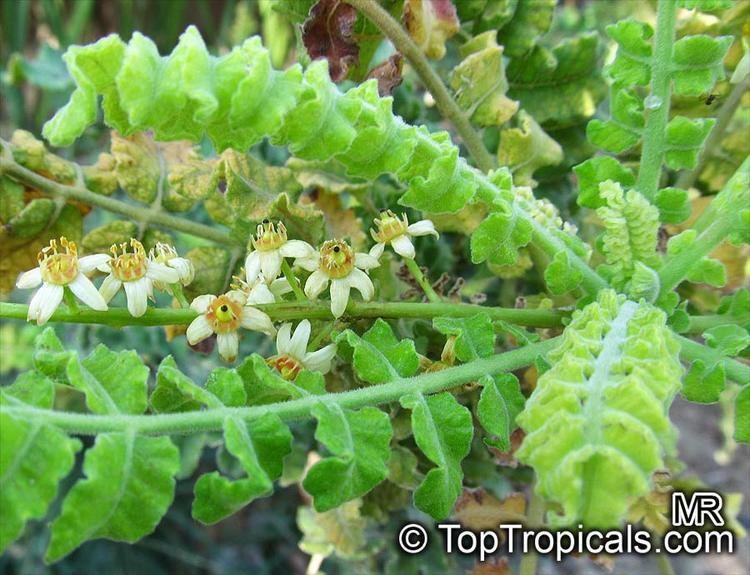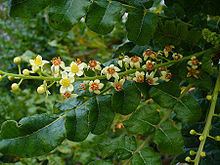Similar | ||
My boswellia sacra tree in here
Boswellia sacra (commonly known as frankincense or olibanum-tree) is a tree in the Burseraceae family. It is the primary tree in the genus Boswellia from which frankincense, a resinous dried sap, is harvested. It is native to the Arabian Peninsula (Oman, Yemen), and northeastern Africa (Somalia).
Contents

Description

This species of Boswellia is a small deciduous tree, which reaches a height of 2 to 8 m (6 ft 7 in to 26 ft 3 in), with one or more trunks. Its bark has the texture of paper and can be removed easily. It has compound leaves and an odd number of leaflets, which grow opposite to one another along its branches. Its tiny flowers, a yellowish white, are gathered in axillary clusters composed of five petals, ten stamens and a cup with five teeth. The fruit is a capsule about 1 cm (0.39 in) long. The new leaves are covered with a fine down.
Individual trees growing on steep slopes tend to develop some buttressing that extends from the roots up into the base of the stem. This forms a sort of cushion that adheres to the rock and ensures a certain stability.
Occurrence and habitat

Boswellia sacra is abundant in Oman and southern Yemen in arid woodland, on the steep, precariously eroding slopes in the mountains of Dhofar, but it is most prevalent in northern Somalia.
B. sacra tolerates the most critical situations and often grows on rocky slopes and ravines, up to an altitude of 1,200 m (3,900 ft), mostly in calcareous soil.
Resin
The trees start producing resin when they are about 8 to 10 years old.

The resin is extracted by making a small, shallow incision on the trunk or branches of the tree or by removing a portion of the crust of it. The resin is drained as a milky substance that coagulates in contact with air and is collected by hand.
Growing conditions vary significantly, affecting both tree development and resin produced. Trees in the narrow fog-laden zone where the desert meets Dhofar mountain range, a region known as the Nejd, grow extremely slowly and produce very high quality resin in large, white clumps. Not surprisingly, Omanis and other Gulf State Arabs consider this to be superior to all other resins produced in North and Northeast Africa, India, and Asia, and it is priced accordingly.
Threats
Recent studies have indicated that frankincense tree populations are declining due to overexploitation. Heavily tapped trees have been found to produce seeds that germinate at only 16% while seeds of trees that had not been tapped germinate at more than 80%.
Animals in Oman often browse on the tree's foliage, flowers, and seedlings, resulting in scant regeneration; the mature trees that remain are apparently dying.
